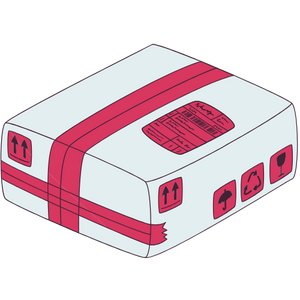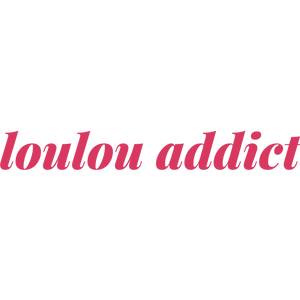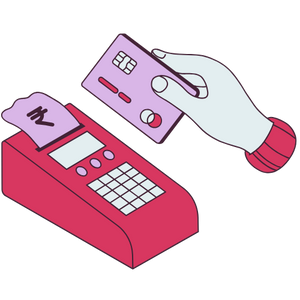How do you track your menstrual cycle?

Female cycle, menstrual cycle, hormonal cycle—different terms for the cycle that governs the lives and bodies of women of childbearing age. From puberty to menopause, all women experience this repetitive, cyclical phenomenon: the female hormonal cycle. Curious about how the menstrual cycle works? Check out our series of in-depth articles on the menstrual cycle:
- The menstrual cycle. Menstruation
- The menstrual cycle: the follicular phase
- The menstrual cycle. Ovulation
- The menstrual cycle. The luteal phase
Our complete, no-holds-barred guide to the menstrual cycle can also be incredibly helpful for understanding your body better. Keeping a menstrual calendar and tracking your cycle can be a great way to stay organized, plan ahead, increase your chances of getting pregnant, and know if your period is late. It's also important to monitor your cycles to see if they're balanced or if there are any irregularities. In short, tracking your cycle is important and actually pretty simple. No complicated math, we promise—we’ll explain everything!
In this article
The menstrual cycle and its different phases
First of all, remember that a woman's cycle is made up of four different phases:
- Periods or menstruation, always managed calmly with a beautiful, clean, affordable, and reliable Louloucup period panty or an ultra-soft Loulou menstrual cup;
- The follicular or pre-ovulatory phase, during which the follicles mature;
- During ovulation, a mature follicle ruptures and releases an oocyte ready to be fertilized by a sperm cell;
- The luteal phase, the final phase of the cycle, prepares the endometrium for a potential implantation or for the next period, depending on whether fertilization occurs.
Average menstrual cycle, irregular menstrual cycle
The female cycle lasts an average of 28 days. However, it’s not an exact science. It’s affected by a variety of outside factors that can throw it off: stress, eating disorders, high-level sports, and certain illnesses or treatments. So, from one cycle to the next, the length can vary slightly (28 days, 30 days, then 27 days, etc.). There’s no need to worry about a slight shift forward or backward. That’s completely normal.
Regulated by hormones (estrogen, progesterone), the menstrual cycle is a well-oiled machine that can sometimes experience a few hiccups. There’s no need to worry if your cycle only varies by a few days, as long as you don’t experience pain or any unusual symptoms along with your period. Your menstruation can also depend a lot on your type of birth control.
Counting or tracking your menstrual cycle isn’t as complicated as it seems!
Why track your cycle?
So, why bother tracking your cycle? There are several reasons.
Trying to get pregnant, knowing when you’re more or less fertile, and figuring out your fertile days and approximate ovulation day can help boost your chances of conceiving faster. It also works the other way: if you don’t want to get pregnant, knowing your fertile window in your cycle or month helps you avoid any unprotected sex and thus reduces the risk of an unwanted pregnancy.
Tracking your cycle ultimately means having control over your body and your cycle, understanding it better, and being able to identify the different things that happen throughout the month.
Do you get weird, unexplained cravings, or feel more irritable, tired, or down? You’re probably in the luteal phase and experiencing the classic PMS, Premenstrual Syndrome.
Notice any clear, stretchy discharge that looks like egg whites? You’re likely ovulating. That’s why it’s so helpful to know your cycle and what phase you’re in!
To sum up, knowing how to track your cycle is useful if you want to have a baby—or if you don’t. Tracking your cycle also lets you estimate when your next period will start. Super handy for planning ahead, like making sure your Loulou period underwear is clean and ready to go.
What’s the best way to track your cycle?
No worries if you’re not great at math—calculating your menstrual cycle is easy. First, you need to know how long your cycle is. No idea? No problem, just use 28 days, the average length of a menstrual cycle.
The first day of your cycle is the first day of your period. Simple so far. Then count 28 days, which will take you to the start of your next cycle’s period. Of course, every woman is different, and every cycle is different.
A hormonal cycle usually lasts between 25 and 35 days. Cycles are considered short if they last less than 20 days, and long if they last more than 35 days.
Be sure to mark the first day of your period on a calendar, your planner, or even your bullet journal. Then add 28. This will bring you to the start of your next cycle. At first, if you’re unsure of your average cycle length, it might not be exact. After your first cycle, adjust with the exact number of days from your first cycle. This will be more in tune with your personal rhythm.
Keep a menstrual calendar, the right tools
After several months and cycles, you should normally, if you don’t have irregular periods, be able to know exactly when your next period will be. Are you into bullet journaling, highlighters, and colorful pens? Create your own menstrual chart to track your period days. You can easily find templates or inspiration online, on Instagram, or Pinterest.
To find out the dates of your next periods, there are some very useful and well-designed tools available. Apps on the Playstore or Appstore that you can download to your smartphone or tablet are very thoughtfully made. Most are free, and you can enter important information. The app will then estimate the date of your next cycle and can notify you a few days in advance. For some, you can log certain symptoms you experience. Finally, very useful for women trying to get pregnant, some apps inform you about your fertile window or fertile period (the days before and after ovulation) to increase your chances of conceiving. However, be careful: tracking your cycle days has never been a reliable contraceptive method, since sperm can live for up to 5 days and many disruptions can shift your ovulation day.
Louloucup: your brand for washable, sustainable period protection
Finally, we couldn’t finish this article without reminding you of our period products. Louloucup is a French brand of sustainable and reusable menstrual products. Our goal? To offer real alternatives to disposable tampons and pads—healthy, organic solutions for all women to experience their periods more comfortably.
Today, Louloucup offers a wide range of products:
- Washable period panties,
- Menstrual cups made of medical-grade silicone,
- Menstrual swimwear so you never have to miss a swim session.
We also offer more specialized ranges so that every woman can find what works for her:
- a range of period panties for teens: a selection of our best models in XXS size,
- a range of plus-size absorbent panties: a selection of beautiful period panties in XXL, XXXL, and XXXXL sizes,
- a range of seamless washable panties: a selection of completely invisible, seamless underwear,
- a postpartum line perfect for new moms dealing with lochia and heavy bleeding after childbirth,
- a range of menstrual thongs for those with light periods or vaginal discharge.
Don’t forget, shipping is free with Louloucup. The more products you add to your cart, the more you save! Buy 5 products and get a free pair of panties! So go for it!
 Did you like this article? Pin it!
Did you like this article? Pin it!


































